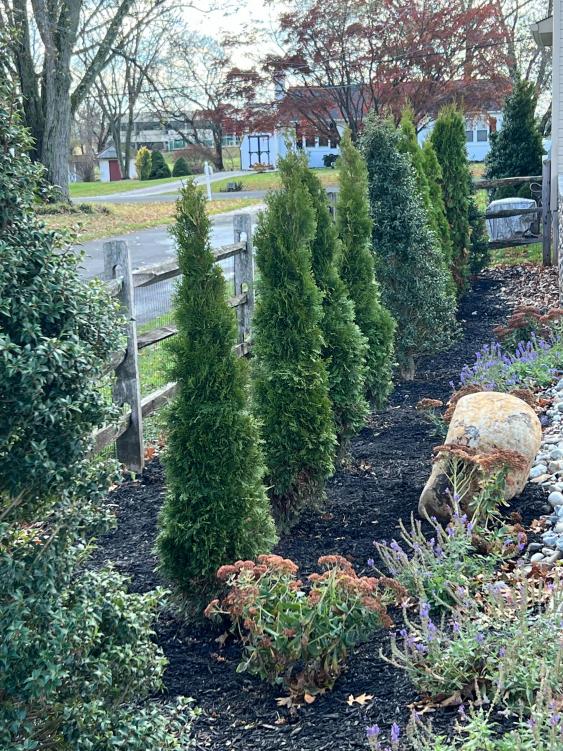Many homeowners complain how little privacy their backyards offer. While wishing for more privacy, they are not anxious to ‘fence’ themselves in from their neighbors completely. There are numerous landscaping solutions to achieve privacy.
By using combination of strategies to block, divert, or steal views, your backyard can be a haven without walls. In addition to creating privacy, screen plantings add security to your property, block the wind or an eyesore and even muffle highway noise. There’s no doubt that a privacy screen is a valuable landscape enhancement that is not only functional but beautiful.
Ideas for Screening a Yard
A Formal Look – Pick one shrub or tree and plant in a row. Use evergreen plant material to give year-round privacy or deciduous materials where enclosure in the summer is more important. Leave ample space between each tree to not feel boxed in. Older, more formal homes are more suited sometimes for a formal trimmed hedge that lends itself to a traditional privacy barrier.
Elevation Change – Create a mounded berm beyond the original grade. Plant on top of the berm. A small change in elevation will create the illusion of more privacy.
A Natural Look – An informal look can consist of a mix of plants arranged in a staggered fashion. Mix a selection of trees, shrubs, perennials and annuals so that there is a healthy variety. Staggered planting of shrubs, perennials and trees make the barrier seem less severe, but still creates the seclusion you’re looking for.
Evergreen vs Sometimes Green?
The important question is whether you want privacy year-round or whether you don’t mind the backyard being visible in the winter. Evergreens are the popular choice due to their constant foliage and quick growth. Skip Laurels, Yews are great midsize shrubs and Green Giant Arborvitae are perfect for taller screens. Smaller Arborvitae are also good to create a barrier.
Deciduous plants are leafless for the winter. However, they have their advantages also with attractive blossoms in the spring and vibrant bursts of fiery colors in the fall. Small trees such a Japanese maple and flowering Dogwoods can help spread out the base of a mixed screen.
Plan Ahead
An important consideration when selecting plants for a living screen is the future size of the plant. Don’t plant for instant gratification. Keep their mature sizes in mind and give them the proper space to grow, otherwise they will crowd each other. Crowded plants don’t get the sunlight they need and they usually do not thrive. Also consider shade and soil conditions.
The best time to schedule your ‘living green fence’ is now. Because the sooner you plant screening plantings the quicker you will get the results you are looking for. Let Whitehouse Landscaping help you create a natural screen. If privacy isn’t the only challenge you face, check out our website for more of our landscaping services. Call 484-300-4290 for a free consultation.

